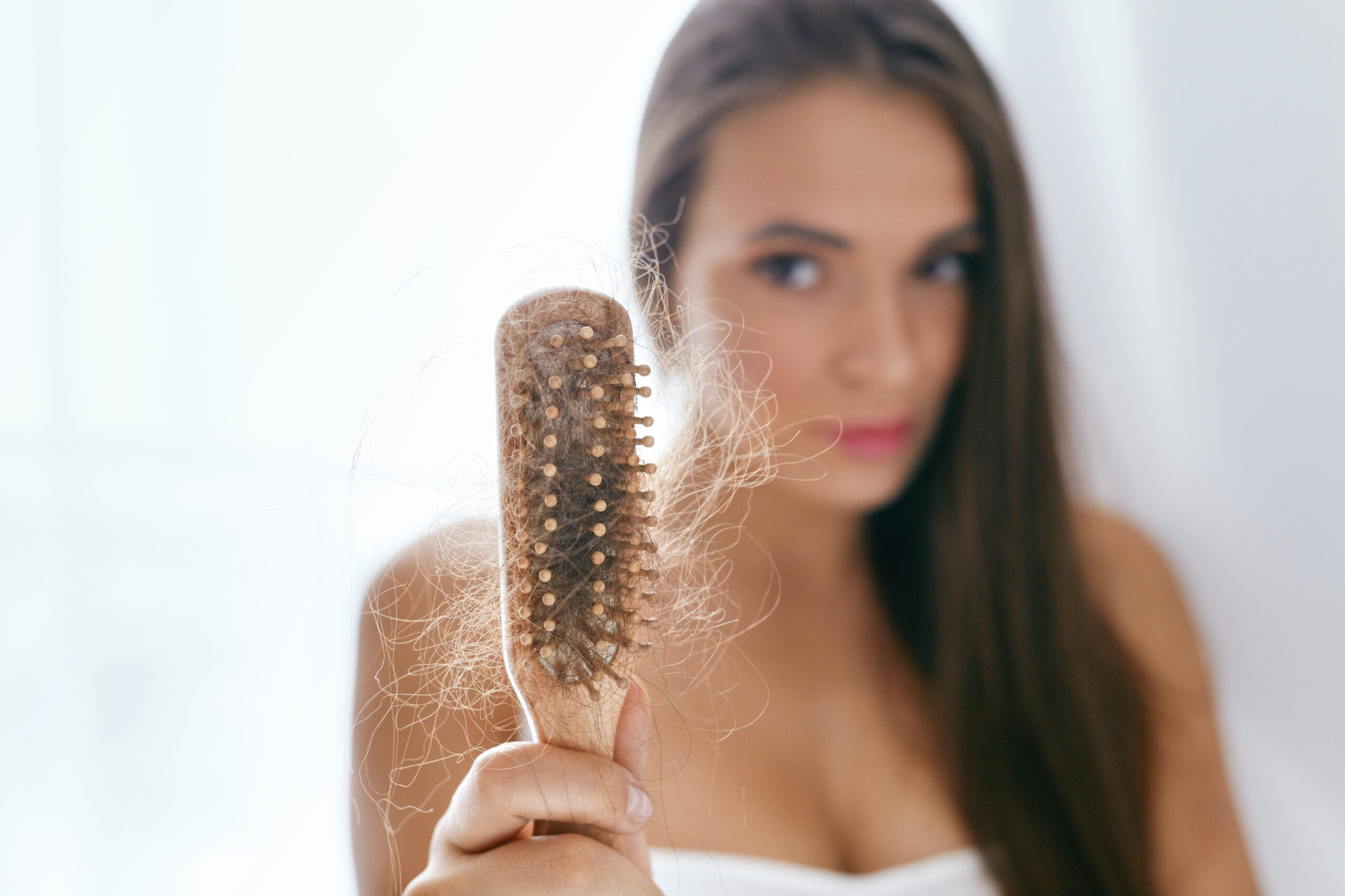Wigs have long been a staple in the world of fashion and beauty. Whether worn for fashion, theater or hair loss, wigs provide a versatile way to change up your look. While the benefits of wigs are plentiful, it’s important to be aware of how heat can impact them. By understanding the potential risks and learning how to prevent heat damage, you can keep your wigs looking vibrant and beautiful for longer.
The Appeal of Heat Styling
One of the major benefits of wigs is the ability to style them in various ways without subjecting your natural hair to potential damage. Curling, straightening, and even crimping wigs can offer endless styling possibilities. But here’s the catch: many wigs, especially synthetic ones, can be significantly damaged by heat.
What is Heat Damage?
Heat damage occurs when high temperatures alter the structure of the wig fibers, leading to irreversible changes. For synthetic wigs, this can mean melting or frizzing of the fibers, while human hair wigs can suffer from dryness, split ends, and breakage. Over time, repeated exposure to high temperatures can leave your wig looking lifeless and frizzy, with a texture that’s difficult to manage.
Signs Your Wig is Heat Damaged
Recognizing the signs of heat damage early can save your wig from further harm. Here are some common indicators:
- Dryness and Brittleness: The wig feels rough and dry to the touch.
- Frizz and Tangles: Increased frizz and difficulty detangling.
- Loss of Shape: The wig doesn’t hold styles as well as it used to.
- Shedding: More hair strands falling out than usual.
Synthetic Wigs - Keep It Cool!
Synthetic wigs are a popular choice due to their affordability and variety of styles and colors. However, they require special care, particularly when it comes to heat exposure. Unlike human hair wigs, synthetic wigs are made from fibers that can easily melt or frizz when exposed to high temperatures. Here’s what you need to know to keep your synthetic wigs looking their best.
Heat Styling Synthetic Wigs
Most synthetic wigs are not designed to withstand direct heat from styling tools such as curling irons, straighteners, or blow dryers. Attempting to use these tools can lead to severe damage, including melting or frizzing of the fibers.
If you want to style your synthetic wig, you will need to consider steam styling. This is a safer alternative to traditional heat styling. Steam can help reshape synthetic fibers without causing damage. However, steam styling can be tricky to master and is best done by a professional wig stylist. They have the expertise and equipment to ensure the wig is styled correctly without compromising its integrity.

Heat from stoves, ovens and grills can damage your synthetic wig!

Everyday Heat Exposure
It’s not just styling tools that pose a risk to synthetic wigs. Everyday sources of heat can also cause damage. Here are some common culprits to be mindful of:
- Ovens and Grills: Be cautious when cooking. Opening a hot oven or standing too close to a grill can expose your wig to intense heat, leading to frizzing or melting.
- Heat Lamps and Open Flames: Avoid situations where your wig might come into close proximity to heat lamps or open flames, such as candles or fireplaces.
- Hot Water: Be careful when washing your synthetic wig. Always use cool or lukewarm water, as hot water can damage the fibers.
General Care Tips for Synthetic Wigs
To keep your synthetic wig in top condition, follow these general care tips:
- Gentle Washing: Wash your wig with products specifically designed for synthetic wigs. Use cool water and avoid vigorous scrubbing.
- Proper Storage: Store your wig on a wig stand to maintain its shape and prevent tangling. Keep it away from direct sunlight and high heat areas.
- Regular Maintenance: Detangle your wig regularly using a wide-tooth comb or a wig brush designed for synthetic fibers. Apply wig conditioner to keep it smooth and manageable.
Heat-Friendly Synthetic Wigs - The Pros and Cons
Exploring Heat-Friendly Synthetic Wigs
For those who love the versatility of heat styling but prefer the affordability and variety of synthetic wigs, heat-friendly synthetic wigs may be an option. These wigs are designed to withstand higher temperatures than regular synthetic wigs, allowing for a range of styling options. However, they come with their own set of considerations and maintenance requirements.
Benefits of Heat-Friendly Synthetic Wigs
Heat-friendly synthetic wigs are specifically formulated to endure heat up to around 300°F (149°C), making them more resilient to styling tools such as curling irons, straighteners, and blow dryers. This means you can achieve a variety of looks without worrying about immediate damage. Additionally, these wigs are less susceptible to accidental heat exposure from everyday sources like ovens and grills, providing more peace of mind in daily activities.
Maintenance and Care
While heat-friendly synthetic wigs offer more styling flexibility, they require higher maintenance compared to both regular synthetic wigs and human hair wigs. Here are some key points to consider:
- Regular Detangling: Heat-friendly synthetic fibers tend to frizz and clump easily, necessitating daily detangling. Use a wide-tooth comb or a wig brush designed for synthetic wigs to gently remove tangles.
- Frequent Smoothing: To maintain a smooth and sleek appearance, you’ll need to use a flat iron regularly. This helps to realign the fibers and keep the wig looking polished

Heat-friendly wigs require a commitment to daily maintenance!
- Higher Maintenance: These wigs demand more time and skill for styling compared to human hair wigs. The fibers do not behave exactly like natural hair, requiring careful handling and technique to achieve desired styles.
- Shorter Lifespan: Despite their styling benefits, heat-friendly synthetic wigs do not last as long as human hair wigs or even regular synthetic wigs. The fibers can degrade with frequent heat exposure and regular wear, meaning you might need to replace them more often.

Styling Tips for Heat-Friendly Synthetic Wigs
To get the best results from your heat-friendly synthetic wig, follow these styling tips:
- Use Low to Medium Heat: Even though these wigs can handle up to 300°F (149°C), it’s best to use the lowest effective heat setting to minimize potential damage.
- Test a Small Section First: Before fully styling, test the heat on a small, inconspicuous section of the wig to ensure it responds well.
- Move Quickly: Avoid holding the styling tool in one spot for too long to prevent heat concentration, which can cause frizzing or fiber damage.
- Cool Down: Allow the wig to cool completely after styling to set the style and reduce the risk of altering the fiber.
Weighing the Pros and Cons
Heat-friendly synthetic wigs provide a wonderful option for those who want the styling versatility of human hair wigs without the higher cost. While they do require more maintenance and have a shorter lifespan, the ability to use heat tools up to 300°F (149°C) opens up a range of styling possibilities. By understanding the unique needs of heat-friendly synthetic wigs and dedicating time to their care, you can enjoy a variety of stylish looks with confidence.
Human Hair Wigs - Ultimate Versatility
Tips for Heat Styling Human Hair Wigs Without Damaging Them
Human hair wigs offer unparalleled versatility and a natural look, making them a popular choice for those looking to change their hairstyle. However, to keep your wig looking its best, it’s important to follow proper heat styling techniques. Here are some tips to help you style your human hair wig without causing damage.
1. Prep with Heat Protectant
Before applying any heat, always use a heat protectant spray. This creates a barrier between the hair and the heat, helping to prevent damage and maintain the wig’s integrity.
2. Use the Right Tools
Invest in high-quality heat styling tools with adjustable temperature settings. Ensure your tools are in good condition, as damaged tools can snag hair and cause breakage.
3. Optimal Temperature Settings
- Low to Medium Heat: For most human hair wigs, keep the temperature between 250°F (121°C) and 350°F (177°C). Higher temperatures can cause unnecessary damage.
- Fine or Colored Hair: Use the lower end of the temperature range to prevent additional stress on the hair fibers.

4. Section Hair for Even Styling
Divide the wig into small, manageable sections. This ensures even heat distribution and reduces the risk of overheating any one area.
5. Avoid Prolonged Heat Exposure
Do not hold the styling tool in one spot for too long. Move it smoothly and consistently to avoid burning the hair. For curling or straightening, one to two passes are usually sufficient.
6. Cool Down Period
After applying heat, allow the hair to cool completely before touching or brushing it. This helps set the style and reduces frizz.
7. Regular Maintenance
- Deep Conditioning:
- Regularly deep condition your human hair wig to keep it hydrated and supple. This helps repair any minor heat damage and maintains the hair’s shine.
- Trimming: Schedule periodic trims to remove split ends and keep the wig looking fresh.
8. Limit Heat Styling Frequency
Even though human hair wigs can handle heat better than synthetic wigs, it’s still best to limit heat styling to preserve the hair’s natural quality. Explore no-heat styling methods like rollers, braid-outs, or twisting to create beautiful styles without heat.
9. Professional Assistance
For significant restyling or repair, consider taking your wig to a professional stylist. They have the expertise and tools to safely style and maintain your wig.
10. Proper Storage
Store your wig on a wig stand or mannequin head to maintain its shape and prevent tangling. Keep it in a cool, dry place away from direct sunlight and heat sources.
Summary of Using Heat With Human Hair
Heat styling human hair wigs allows for incredible versatility and personalization. By following these tips, you can style your wig while minimizing damage, ensuring it remains beautiful and lasts longer. Remember, taking good care of your wig means you can enjoy stunning styles and a natural look for many wears to come.
Repairing Heat-Damaged Wigs
Repairing Heat-Damaged Wigs
If you already have a wig that’s suffered from heat damage, don’t despair. There are ways to revive it:
- Deep Conditioning: Use a deep conditioner or hair mask designed for wigs. Let it sit for an extended period to restore moisture.
- Trimming: Sometimes, the best way to handle severe damage is to trim the affected areas.
- Professional Help: Consider taking your wig to a professional wig stylist who can provide specialized treatments and advice.
Conclusion
Wigs are a fantastic way to experiment with different looks and protect your natural hair. However, being mindful of how you style them, especially with heat, is crucial to maintaining their appearance and longevity. By following these tips and treating your wigs with care, you can enjoy beautiful, versatile hairstyles without the worry of heat damage. Remember, the health of your wig is just as important as the style it brings to your overall look.






